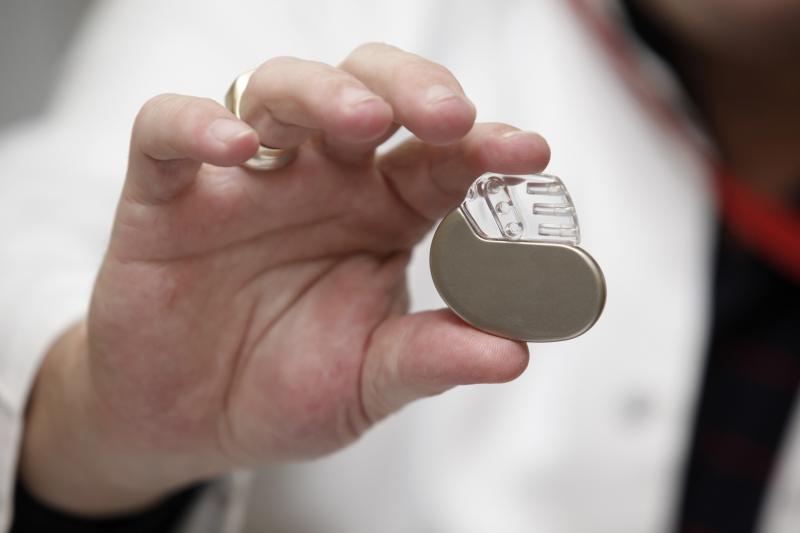 While pacemakers are already life-saving devices, a new breed of biodegradable batteries would offer even greater possibilities
While pacemakers are already life-saving devices, a new breed of biodegradable batteries would offer even greater possibilitiesHigher heart rate (HR) may be beneficial to heart failure with preserved ejection fraction (HFpEF) patients with left ventricular diastolic dysfunction, a new study has found.
Researchers performed a prospective study of 20 stable HFpEF outpatients (mean age, 79.0±8.4 years; 55 percent female) with diastolic dysfunction and who had pacemakers. Participants were subjected to a 4-week change in the lower pacemaker rate, which was increased to 80 bpm. This was followed by a reversal to the original rate for the next 2 weeks.
Study outcomes included quality of life, measured using the Minnesota Living with Heart Failure Questionnaire (MLHFQ), as well as results in the 6-minute walk test (6MWT) and levels of N-terminal pro B-type natriuretic peptide (NT-proBNP).
Increasing the pacemaker rate resulted in a significant quality of live improvement. Scores in the MLHFQ increased from 34±19 at baseline to 29±22 after 4 weeks (p=0.03). Returning the pacemaker to its original setting resulted in a deterioration of quality of life (week 6: 36±23).
Increasing the pacemaker setting also resulted in 6MWT improvements, which jumped from 329±116 m at baseline to 350±127 m at week 4 (p=0.05). NT-proBNP, on the other hand, followed an opposite trend of change, decreasing after changing the pacemaker rate. However, the magnitudes of change failed to reach statistical significance.
Increasing pacemaker rate did not result in any apparent adverse events and arrhythmias. A quarter of the participants requested that their settings be permanently bumped up to 80 bpm after study completion.